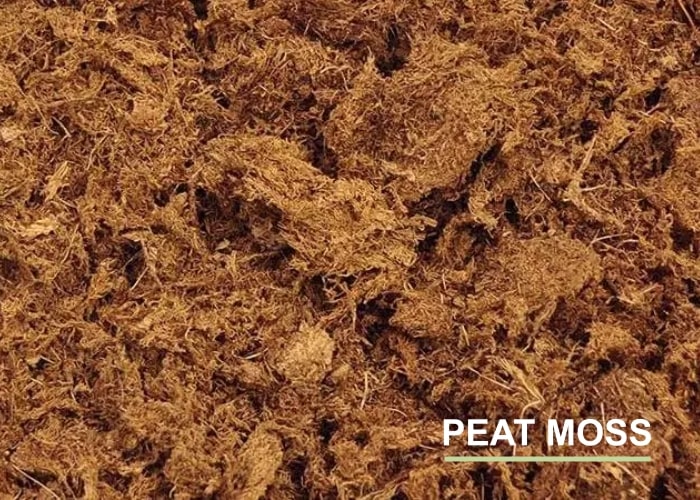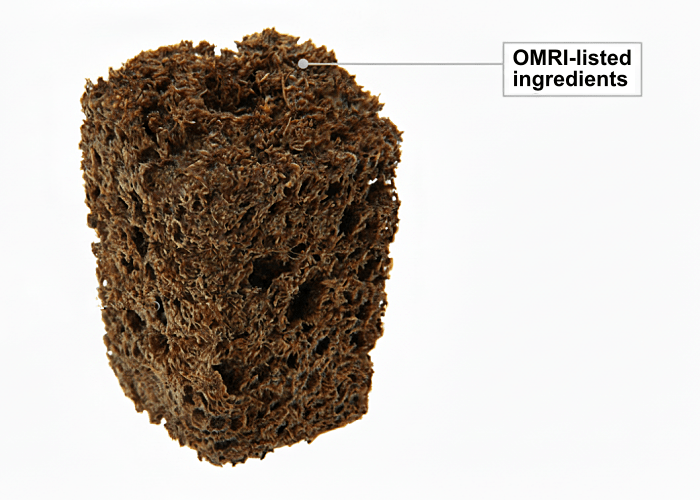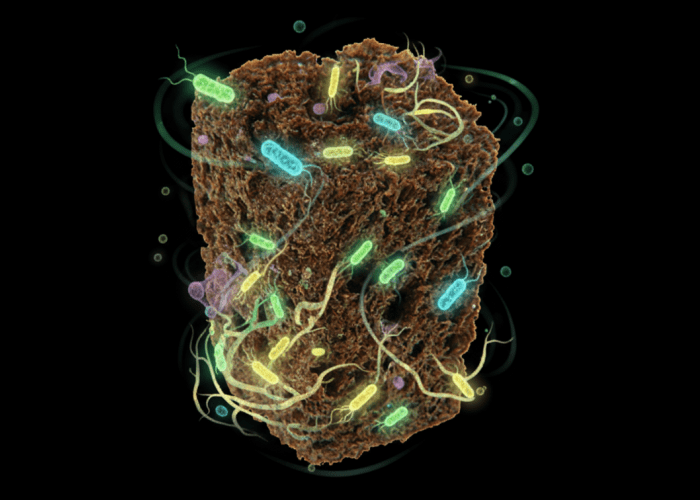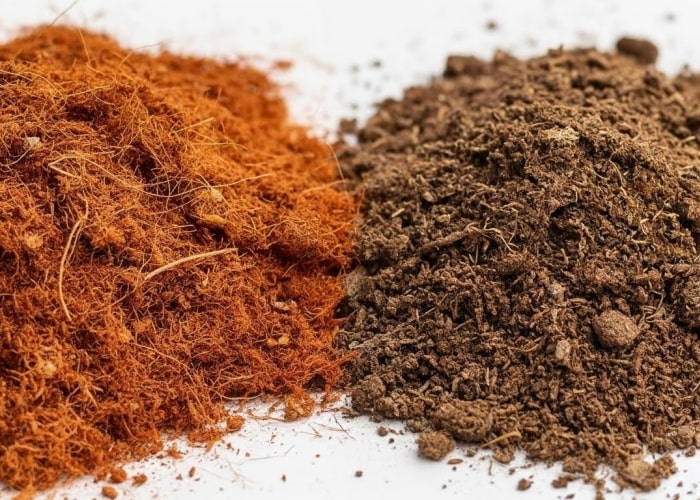When you’re running a growing operation, your choice of propagation media can make or break your growing success. Get it right, and you’ll see healthy root systems, vigorous plants, and the kind of yields that keep your operation profitable. Get it wrong, and you’re looking at stunted growth, disease issues, and disappointed customers.
With sustainability becoming more important to consumers and innovative solutions constantly evolving, commercial growers are facing a big decision: stick with traditional synthetic media or make the switch to advanced natural alternatives. At IHORT, we’ve been leading this evolution, developing our Q and Excel Plugs to give growers the best of both worlds – natural performance with commercial reliability.
Let’s break down what’s available in today’s market and why naturally derived media might be the game-changer your operation needs.
Types of Propagation Media
Today’s propagation media landscape can be divided into two main camps: natural options derived from organic materials, such as peat, coir, and bark, and synthetic alternatives engineered from materials like rockwool and phenolic foam. Each category brings its own set of benefits and challenges to your growing operation.
Natural Media Options
Coconut Coir (Coco)
Coconut coir is the fibrous material extracted from coconut husks that has become a popular sustainable option.
- Excellent water retention while maintaining aeration
- Renewable and environmentally sustainable
- pH neutral (5.8-6.8)
- Naturally resistant to specific pathogens
- Biodegradable at the end of use
Peat Moss
Peat moss is a traditional growing medium harvested from decomposed sphagnum moss in bogs.
- Superior water-holding capacity
- Naturally acidic pH (3.5-4.5)
- Lightweight and compressible
- Excellent cation exchange capacity for nutrient management
- When sourced responsibly, it remains a sustainable option
Wood Fiber
Wood fiber is a processed natural medium made from softwood. Softwood comes from coniferous trees, such as pine, spruce, and fir, which have needles instead of leaves and typically grow faster than hardwood trees. This growth rate results in wood with a more open cellular structure, making it easier to process into growing media.
- Good structural stability
- Renewable resource when sustainably harvested
- Provides excellent drainage
- Creates air pockets for root oxygenation
Bonded Natural Media
Bonded natural media like IHORT’s Q and Excel Plugs combines organic materials like peat, coir, or wood fiber with natural binding agents to create structured plugs and blocks that hold their shape while still providing the benefits of natural growing materials.
- Maintains structural integrity while delivering natural benefits
- Offers superior handling characteristics
- Specifically engineered for optimal root development
- Provides consistent performance across batches
Synthetic Media Options
Rockwool
Rockwool is a synthetic growing medium made from spun volcanic rock and limestone that’s heated to extreme temperatures, creating sterile fibers.
- Clean growing environment
- Consistent physical properties
- High water retention
- Non-biodegradable
- Requires pH adjustment before use
- Energy-intensive manufacturing process
Phenolic Foam
Phenolic foam is a synthetic growing medium made from formaldehyde-based plastic that’s engineered to mimic the properties of natural materials.
- Uniform cell structure
- Consistent water distribution
- Non-biodegradable
- Manufactured using chemical processes
- Limited reusability
Polymer-Based Media
Polymer-based propagation media uses synthetic plastic materials engineered with specific pore structures to control water retention and airflow.
- Engineered for specific growing needs
- Consistent performance
- Non-biodegradable
- Petroleum-based manufacturing
The Superior Advantages of Natural Media
While synthetic media options may offer consistency and sterility, the overwhelming advantages of our natural propagation media make them the superior choice for growers committed to:
- Premium root development and plant health
- Supporting biological processes that enhance plant resilience
- Sustainability and environmental responsibility
Excellent Root Development
Perhaps the most compelling reason to choose a natural media is its exceptional ability to foster healthy root development. Research demonstrates that plants grown in natural media like our Q and Excel Plugs develop more robust, fibrous root systems compared to those in synthetic alternatives.
The healthy root systems occure because of the ideal environments created by the biological structure of natural fibers.
- Varied pore sizes create perfect air-to-water ratios
- Natural antimicrobial properties protect vulnerable young roots
- Surface textures guide root growth and development
Healthy root development translates directly to stronger plants, faster growth cycles, and higher yields.
Support for Biological Activity
Unlike synthetic media that is often sterile and inert, natural propagation materials—like the peat in our plugs—contain beneficial microorganisms and compounds. These biological elements:
- Support beneficial fungal and bacterial colonies
- Create a living ecosystem within the growing media
- Enhance nutrient availability through microbial activity
- Provide natural protection against specific pathogens
This biological activity in IHORT’s bonded plugs creates a more resilient growing environment, helping plants develop their natural defenses.
Environmental Sustainability
Q and Excel Plugs utilize renewable resources, offering significant environmental benefits that synthetic types simply cannot match.
- Coconut coir takes what would otherwise be waste material from coconut processing, transforming a byproduct into a valuable growing resource.
- Responsibly harvested peat, though slower to renew, remains sustainable when properly managed.
The environmental footprint of IHORT products extends beyond production to disposal, where these materials can be composted rather than sent to landfills. Options like rockwool and phenolic foam require energy-intensive manufacturing and leave behind non-biodegradable waste.
IHORT’s Natural Innovation
At the forefront of natural propagation media development, IHORT has pioneered solutions that combine the best aspects of natural materials with innovative binding technology. Our premium Q Plugs and Excel Plugs create exceptional structural integrity while maintaining all the benefits of natural media. The result is a growing medium that delivers:
- Optimal air-to-water ratio for explosive root development.
- Consistent performance across growing cycles.
- Superior handling characteristics that reduce labor costs.
- Sustainable sourcing that reduces environmental impact.
As horticulture continues to advance toward smarter, more sustainable growing practices, naturally derived propagation media have become the essential starting point for strong, healthy root development. Choosing IHORT’s innovative Q and Excel Plugs means that growers invest in both the immediate success of their crops and the long-term health of our planet.



